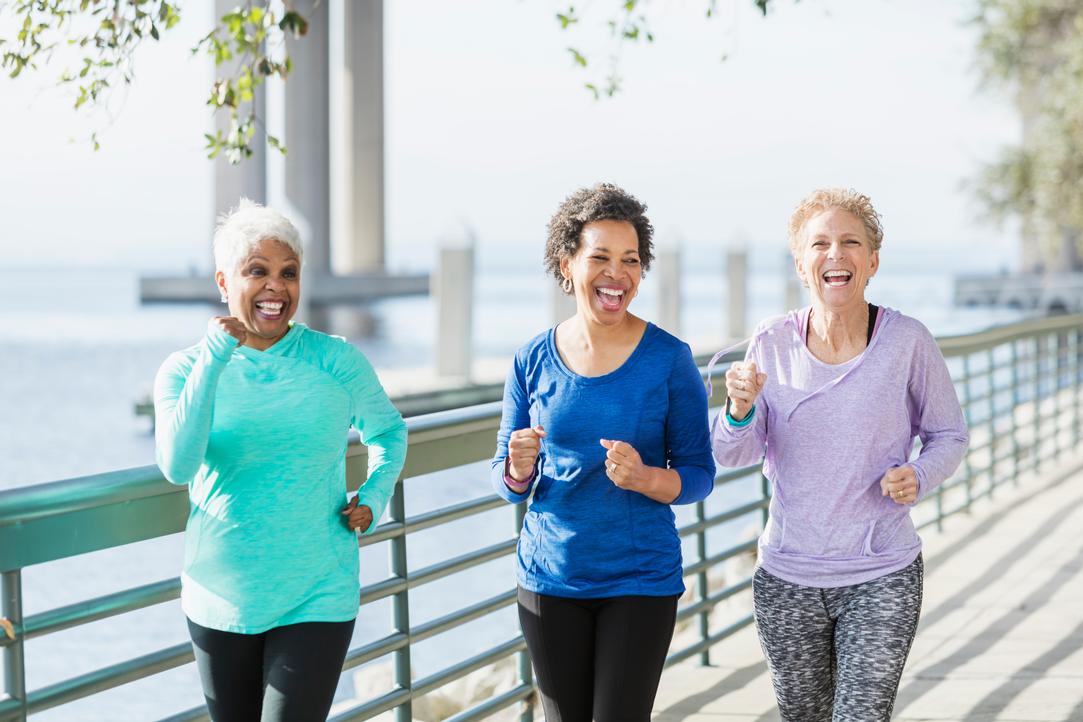In the United States, the National Center for Health Statistics estimates the life expectancies of males and females are 74.5 years and 80.2 years, respectively. For healthy aging, the Centers for Disease Control and Prevention (CDC) states that physical activity is key.
To find out whether physical activity had an advantage over genetics in promoting longevity, researchers at the Herbert Wertheim School of Public Health and Human Longevity Science at the University of California San Diego and other institutions conducted a nationwide study.
After analyzing health data of more than 5,000 older postmenopausal women, the researchers found that higher levels of light, moderate, or vigorous physical activity correlated with a lower risk of all-cause deaths. The findings expanded on prior studies that have shown that more sedentary time carries greater health risks.
These associations persisted across varying levels of genetic potential for living longer.
“[The] findings support the importance of higher physical activity (PA) and lower sedentary time (ST) for reducing mortality risk in older women, regardless of [their] genetic predisposition for longevity,” the researchers wrote.
Their prospective study was recently published in the Journal of Aging and Physical Activity.
OPACH women’s study
From 2012 to 2020, the UC San Diego researchers analyzed data on the physical activity of more than 5,000 ambulatory women ages 63 and older.
Lead author Alexander Posis, MPH, a doctoral student in the San Diego State University/UC San Diego Joint Doctoral Program in Public Health, explained the significance of the OPACH study to Medical News Today:
“Our study used pre-existing data from the Objective Physical Activity and Cardiovascular Health (OPACH) study, which is part of the Women’s Health Initiative (WHI) that started in the early 1990s because women had not been included in many epidemiologic studies and clinical trials.”
– Alexander Posis, MPH, lead author of the study
The OPACH study focused on associations between physical activity, cardiovascular disease, and injury risks. The data generated allowed researchers to look at physical activity and the risk of mortality, cancers, cognitive decline, and physical disability as well.
Other research using the OPACH study found associations with physical activity (PA), sedentary time (ST), and mortality during an average follow-up of 3 years. However, no one had explored any possible genetic influence on these associations.
The UC San Diego study aimed to use a follow-up of 6 years and adjust the results with a “weighted genetic risk score (GRS) for longevity.”
Activity and variants
OPACH participants wore an accelerometer 24 hours per day for 7 consecutive days.
The device measured the amount of time the women spent moving or being still and the intensity of any activity.
The researchers defined total PA “as movement resulting in energy expenditure.” They categorized PA intensity and ST minutes using predetermined cut points applied to the accelerometer counts.
The researchers’ conclusions
Of the 5,446 women in the present study’s sample, 1,022 passed away during follow-up.
The authors determined that 36% of the total population had a high GRS, 33.1% had a medium GRS, and 30.9% had a low GRS for longevity.
The researchers firstly found that physical activity, of light or moderate-to-vigorous intensity, was associated with a lower risk of death while higher ST was associated with a higher risk of death. Interestingly, these associations persisted regardless of one’s genetic predisposition for longevity.
Interestingly, the low-GRS individuals were younger, more active, and had higher physical functioning scores than the other GRS groups. Those with low GRS were also “more likely to be of Black race/ethnicity than the medium and high GRS groups.”
“Our study showed that, even if you aren’t likely to live long based on your genes, you can still extend your lifespan by engaging in positive lifestyle behaviors such as regular exercise and sitting less,” Aladdin H. Shadyab, PhD, the study’s senior author and assistant professor at the Herbert Wertheim School of Public Health and Human Longevity Science, said in a news release.


